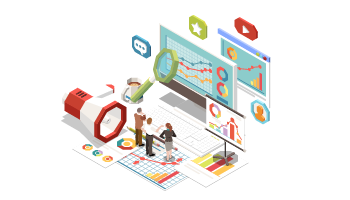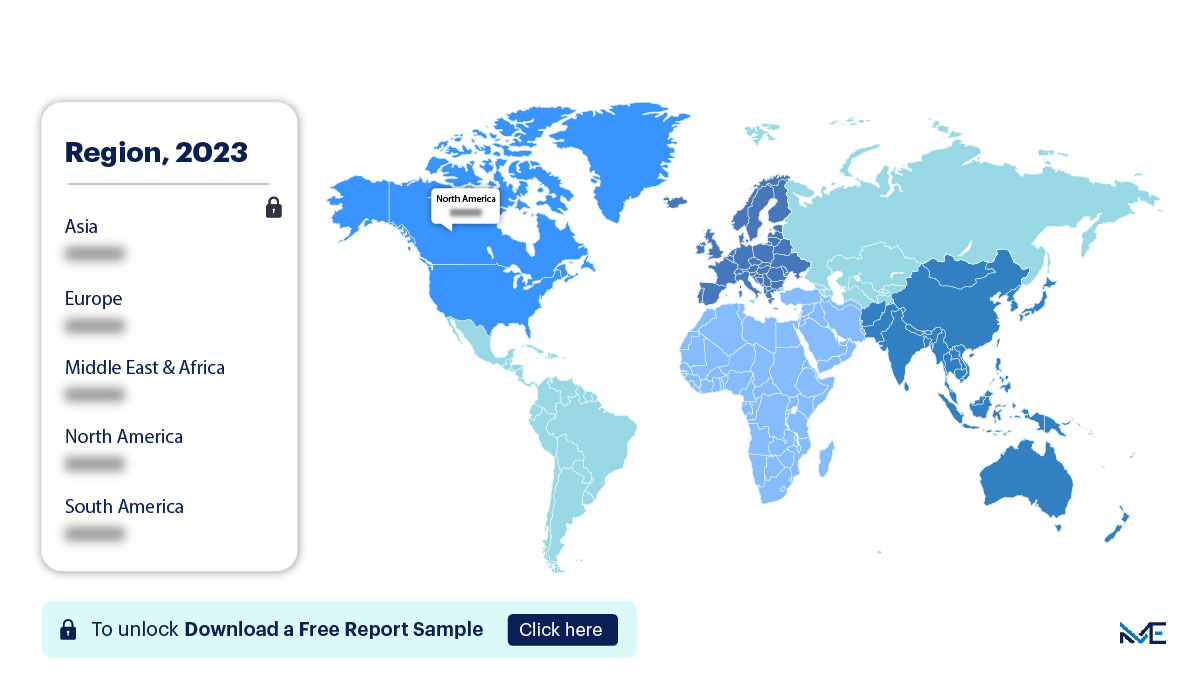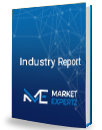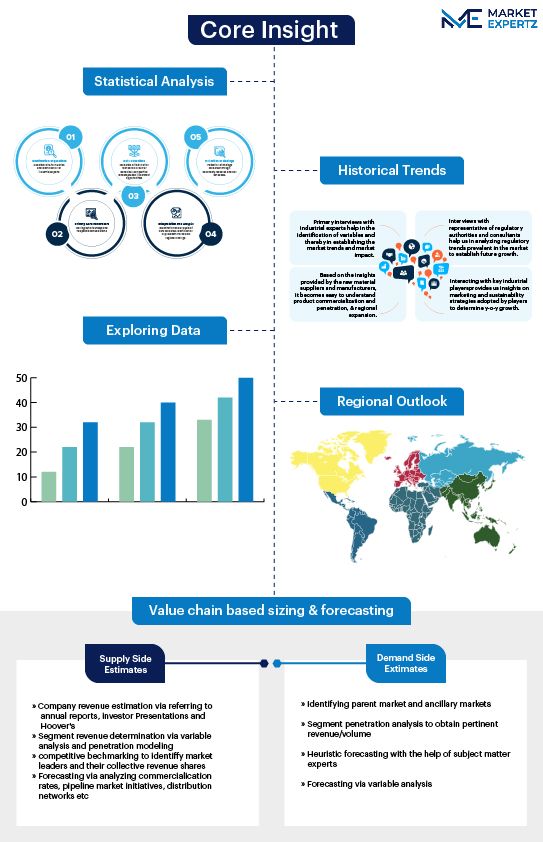Market Snapshot
| Study Period | 2019-2032 |
| Base Year | 2023 |
| Forcast Year | 2023-2032 |
| CAGR | 6.81 |


Gain accurate insights regarding the negative impacts of COVID-19 on all markets and industries
Download Sample PdfReport Overview
The Bioequivalence Studies Market size is estimated to grow at a CAGR of 5.78% between 2022 and 2032. The market size is forecast to increase by USD 2,450.76 million. The growth of the market depends on several factors, including the rising demand for generic drugs, stringent regulatory requirements for drug approval, and the need for cost-effective pharmaceutical development. Bioequivalence studies play a crucial role in this market by ensuring that generic drugs are therapeutically equivalent to their brand-name counterparts.
Bioequivalence Studies Market Overview:
Drivers:
One of the key drivers fueling the growth of the Bioequivalence Studies market is the increasing demand for generic drugs. Generic drugs offer a cost-effective alternative to brand-name medications, making healthcare more affordable for patients and healthcare systems. However, to gain regulatory approval, generic drug manufacturers must demonstrate the bioequivalence of their products to the reference brand-name drugs through rigorous bioequivalence studies. This requirement is driving the demand for bioequivalence studies and fueling market growth.
Moreover, stringent regulatory requirements for drug approval are propelling the demand for bioequivalence studies. Regulatory agencies such as the U.S. Food and Drug Administration (FDA) and the European Medicines Agency (EMA) require comprehensive bioequivalence data to ensure the safety and efficacy of pharmaceutical products. As a result, pharmaceutical companies are conducting more bioequivalence studies to meet these regulatory standards.
Trends:
A notable trend in the Bioequivalence Studies market is the increasing adoption of advanced analytical techniques and technologies. Advancements in analytical chemistry, pharmacokinetics, and pharmacodynamics are enabling researchers to conduct more precise and efficient bioequivalence studies. Techniques such as liquid chromatography-mass spectrometry (LC-MS) and pharmacometric modeling are enhancing the accuracy and reliability of bioequivalence data. This trend is driving the demand for specialized laboratories and contract research organizations (CROs) with expertise in advanced analytical methods.
Additionally, there is a growing emphasis on exploring the bioequivalence of complex drug formulations, including biosimilars and generic versions of biologic drugs. As biologic therapies become more prevalent in healthcare, bioequivalence studies for these products are gaining importance. This trend is expanding the scope of bioequivalence studies and creating new opportunities in the market.
Restraints:
One of the key challenges facing the Bioequivalence Studies market is the high cost and time-consuming nature of conducting these studies. Bioequivalence studies require substantial financial investments, including expenses related to clinical trial participants, analytical equipment, and data analysis. Additionally, the time required for recruitment, data collection, and regulatory review can delay the market entry of generic drugs. These factors can be barriers for pharmaceutical companies, especially smaller ones, looking to engage in bioequivalence studies.
Furthermore, variations in study outcomes due to patient-related factors or differences in study design can sometimes lead to inconclusive or ambiguous results. Ensuring the reproducibility and consistency of bioequivalence studies can be a challenge for researchers and sponsors.
Bioequivalence Studies Market Segmentation By Application:
The generic drug development segment is estimated to experience significant growth during the forecast period. Bioequivalence studies are a fundamental requirement in the development of generic drugs. These studies are designed to demonstrate that a generic drug is therapeutically equivalent to its brand-name reference product. As the demand for cost-effective pharmaceuticals continues to rise, the generic drug market is expanding, driving the need for more bioequivalence studies.
Bioequivalence Studies Market Segmentation By Type:
The pharmacokinetic studies segment is poised for substantial growth within the Bioequivalence Studies market. Pharmacokinetic studies focus on the absorption, distribution, metabolism, and excretion (ADME) of drugs in the human body. These studies provide critical data on how a drug behaves in the body and whether it is bioequivalent to the reference product. Pharmacokinetic studies are essential for regulatory submissions and are a key component of bioequivalence assessments.
Regional Overview:

Download the report summary now!
Request pdf Sample
North America is expected to play a dominant role in driving the global Bioequivalence Studies market, contributing approximately 38% to its growth during the forecast period. The region's well-established pharmaceutical industry, rigorous regulatory standards, and increasing demand for generic drugs are driving the demand for bioequivalence studies. North American pharmaceutical companies are investing in bioequivalence research to gain market approvals for their generic drug products.
Europe also holds a significant share of the market, driven by the presence of leading pharmaceutical manufacturers and CROs specializing in bioequivalence studies. European regulatory agencies have stringent requirements for drug approval, further boosting the demand for these studies.
Bioequivalence Studies Market Customer Landscape:
The Bioequivalence Studies market report encompasses a wide range of customers, including pharmaceutical manufacturers, contract research organizations (CROs), regulatory agencies, and healthcare providers. Pharmaceutical companies and CROs are the primary customers conducting bioequivalence studies to support drug development and regulatory submissions. Regulatory agencies rely on bioequivalence data to assess the safety and efficacy of pharmaceutical products, ensuring they meet rigorous standards. Healthcare providers benefit indirectly from bioequivalence studies by gaining access to a broader range of affordable generic drugs.
Major Bioequivalence Studies Market Companies:
Companies in the Bioequivalence Studies market are continually expanding their capabilities and expertise in conducting bioequivalence studies. They often collaborate with pharmaceutical manufacturers, CROs, and regulatory agencies to provide comprehensive bioequivalence assessment services.
Some prominent players in the market include:
- Charles River Laboratories International, Inc.
- SGS SA
- Eurofins Scientific
- Medpace Holdings, Inc.
- ICON plc
- PAREXEL International Corporation
- PPD, Inc.
- Celerion Inc.
- Frontage Holdings Corporation
- CTC Group
These companies are at the forefront of conducting bioequivalence studies and ensuring that pharmaceutical products meet regulatory requirements and provide safe and effective treatments.
Segment Overview:
The Bioequivalence Studies market report provides revenue forecasts at the global, regional, and country levels, offering insights into growth prospects and regional dynamics within the market.
- Application Outlook (USD Million, 2019 - 2032)
- Generic Drug Development
- New Drug Development
- Others
- Type Outlook (USD Million, 2019 - 2032)
- Pharmacokinetic Studies
- Pharmacodynamic Studies
- Clinical Endpoint Studies
- Therapeutic Equivalence Studies
- Geography Outlook (USD Million, 2019 - 2032)
- North America
- United States
- Canada
- Europe
- United Kingdom
- Germany
- France
- Rest of Europe
- Asia-Pacific
- China
- India
- South America
- Brazil
- Argentina
- Chile
- Middle East & Africa
- Saudi Arabia
- South Africa
- Rest of the Middle East & Africa
RESEARCH METHODOLOGY
A research methodology is a systematic approach for assessing or conducting a market study. Researchers tend to draw on a variety of both qualitative and quantitative study methods, inclusive of investigations, survey, secondary data and market observation.
Such plans can focus on classifying the products offered by leading market players or simply use statistical models to interpret observations or test hypotheses. While some methods aim for a detailed description of the factors behind an observation, others present the context of the current market scenario.
Now let’s take a closer look at the research methods here.
Secondary Research Model
Extensive data is obtained and cumulated on a substantial basis during the inception phase of the research process. The data accumulated is consistently filtered through validation from the in-house database, paid sources as well reputable industry magazines. A robust research study requires an understanding of the overall value chain. Annual reports and financials of industry players are studied thoroughly to have a comprehensive idea of the market taxonomy.
Primary Insights
Post conglomeration of the data obtained through secondary research; a validation process is initiated to verify the numbers or figures. This process is usually performed by having a detailed discussion with the industry experts.
However, we do not restrict our primary interviews only to the industry leaders. Our team covers the entire value chain while verifying the data. A significant number of raw material suppliers, local manufacturers, distributors, and stakeholders are interviewed to make our findings authentic. The current trends which include the drivers, restraints, and opportunities are also derived through the primary research process.
Market Estimation
The market estimation is conducted by analyzing the data collected through both secondary and primary research. This process involves market breakdown, bottom-up and top- down approach.
Moreover, while forecasting the market a comprehensive statistical time series model is designed for each market. Macroeconomic indicators are considered to understand the current trends of the market. Each data point is verified by the process of data triangulation method to arrive at the final market estimates.
Final Presentation
The penultimate process results in a holistic research report. The study equips key industry players to undertake significant strategic decisions through the findings. The report encompasses detailed market information. Graphical representations of the current market trends are also made available in order to make the study highly comprehensible for the reader.
Personalized Business Report Tailored to Your Requirements
- Our expert analysts collaborate directly with you to comprehend your specific needs.
- Get data on regions, segments, competitors, and vendors of your choice.
- Information is presented in alignment with your exact preferences and formatting.
Free Sample Report
"Find new revenue generation opportunities"

